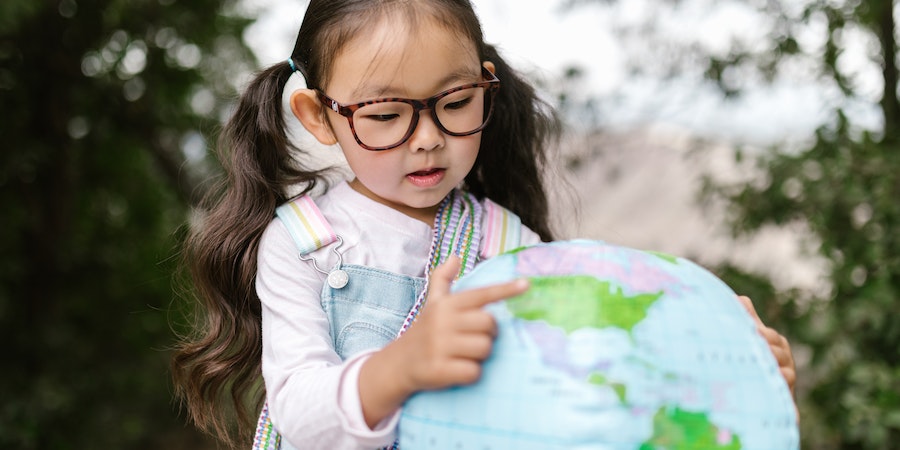
Earth Day comes around this Saturday, April 22, and one thing is clear: The climate crisis is not tomorrow’s problem. Children today, in every corner of the country, and the world, feel its impacts first-hand. As if that wasn’t enough to contend with, our children’s air and water is continuously contaminated by polluters operating with little regard for the planet or human life. Kids bear these impacts – mentally and physically – far more than adults, creating an issue of environmental justice that threatens their well-being.
Since their physiology is significantly different from adults’, children struggle with myriad health and other concerns created by pollution, and the climate crisis and its impacts. Every consequence of our inaction, from drought to displacement, will weigh heavily on our children now and in the future.
Last year, Congress took an historic step to combat pollution, environmental injustices, and the climate crisis by passing the Inflation Reduction Act (IRA) and investing more than $300 billion in our children’s clean energy future. It was the most monumental investment to date, but unfortunately, still leaves gaps that force children to live in unhealthy environments and suffer the consequences of climate change.
Here are just a few of the many ways in which environmental pressures affect children:
- Children’s physiology makes them more vulnerable to extreme heat: Heat waves are one of the deadliest forms of the climate crisis and contribute to more deaths caused by pre-existing diseases like asthma, diabetes, and cardiovascular disease. Children’s unique physiology makes them more likely to suffer from heat stroke or die due to extreme heat. They lose fluids more quickly than adults due to their smaller size and greater surface area to mass ratio and play outside more frequently, making them more vulnerable to serious heat illness.
- Polluted air takes a toll on their health: Chronic exposure to polluted air causes respiratory, cardiovascular, and immune system damage and exacerbates asthma. Air pollution can cause life-long damage to children’s growing lungs, especially due to their propensity to spend more time outside. Even when indoors at school, crumbling infrastructure often means they’re exposed to mold, asbestos, and smog from school buses.
- Millions of children are exposed to contaminated water: Children drink more water in relation to their body weight than adults, making them more susceptible to contaminants. Research shows that water sources at 44% of schools contain elevated levels of lead, which can lead to complications like brain and kidney damage, learning disabilities, and delayed development. Communities with inadequate water systems often find their water sources flooded with sewage, pesticides, and other contaminants during extreme weather events, made even more frequent and severe by climate change.
- Natural disasters leave a lasting impact: The deadly collection of tornadoes, floods, hurricanes, and other extreme weather took 342 lives in the US in 2022 — an aching loss felt heavily by America’s children. After disasters, children, especially those under the age of eight, are more likely to develop anxiety, depression, and post-traumatic stress disorder. The mental toll of extreme weather can lead to difficulty concentrating, outbursts of anger, and mental health struggles that may follow them into adulthood.
- Children from low-income communities and children of color bear the brunt of the crisis: Children from these households often experience environmental injustices — a deadly form of discrimination where poor and minority communities are exposed to disproportionate amounts of pollution. Companies target these areas knowing that systematic racism and a lack of enforcement will allow them to pollute freely. Children in these areas experience higher rates of asthma, lead poisoning, certain cancers, and developmental issues. Without protection, they will continue to suffer.
The next decade will be pivotal for our children, their children, and all of the generations to come. We can help stave off the worst of the climate crisis and create a healthier future for our kids by:
- Committing to update school infrastructure to make sure kids have clean air and clean water
- Supporting climate legislation that protects frontline communities and creates a sustainable future
- Uplifting children from communities that have been left behind by environmental protection practices and centering them in our policies
Last month, Reps. Raúl Grijalva (D-AZ) and Barbara Lee (D-CA) joined Sens. Tammy Duckworth (D-IL) and Cory Booker (D-NJ) to introduce the A. Donald McEachin Environmental Justice for All Act (H.R. 1705/S. 919) aimed at tackling some of the most pressing environmental injustices. Legislation like this bill, which puts our most vulnerable populations first, will help build our clean energy future equitably.
When we commit to our environment, we commit to our kids. Let’s keep them front and center this Earth Day.
